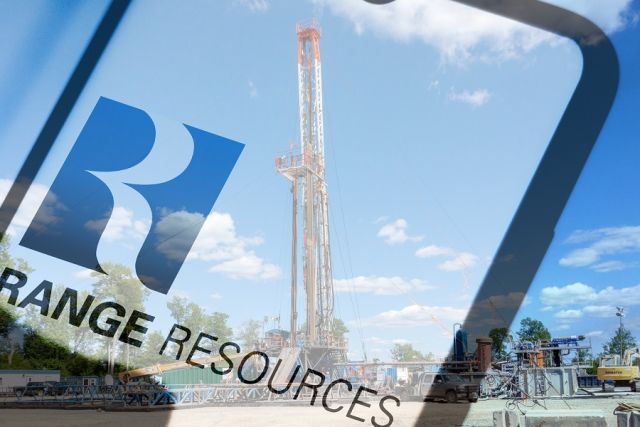
NGLs are providing a boost for Range Resources as the company waits for natural gas demand to rebound. (Source: Shutterstock.com)
Range Resources (RRC) kept overall production at constant levels in the first quarter of 2024, focusing on NGL to lift revenue as the company waits for a predicted arrival of a massive increase in U.S. natural gas demand.
“Our annual production guidance remains unchanged, with a slightly higher liquids cut expected in the first nine months of the year when NGLs are particularly advantaged relative to natural gas based on current forward prices,” Range Resources CEO Dennis Degner said during the company’s first-quarter earnings conference call.
NGLs accounted for 32% of RRC’s total production volume in the first three months of 2024, the highest production ratio for NGLs the company has had in many years, Degner said.
Overall, first quarter production averaged 2.14 Bcfe/d. To reach that level, the company produced an average of 1.46 Bcf/d in natural gas, 107 MMbbl/d of NGL and 6.7 MMbbl/d of oil from its Appalachian base.
Along with natural gas, NGL exports have grown steadily for the last decade. In 2023, more than 2.5 MMbbl/d of NGLs were sent overseas for the first time, according to the U.S. Energy Information Administration. NGL prices have experienced volatility in the same period, with prices swinging between $13/MMBtu and $2.80/MMBtu. Unlike natural gas, the prices have been rising since the summer of 2023 and traded at an average of $7.28/MMBtu in January 2024.
Range Resources’ NGL price realizations provided an uplift of more than $2 to its natural gas prices relative to Henry Hub pricing, Degner said.
The company currently sees the NGL export market continuing to improve, with RRC holding a strong position to take advantage. Overseas NGL production does not seem to be increasing, and the U.S. export infrastructure for NGL favors companies with access to the East Coast, said Alan Engberg, Range Resources’ vice president of liquids marketing.
“There really isn't a whole lot of international supply growth,” Engberg said during the conference. “In fact, during the first quarter, OPEC—if you look at them as a whole—their LPG exports relative to first quarter ‘23 were down 2%.”
Last year, the U.S. captured 90% of the international growth in LPG demand, Engberg said. If the international demand continues to rise, it will eventually outpace U.S. supplies. Meanwhile, more exports mean less space at U.S. ports overall, which will help companies with strong connections to the East Coast.
“Dock capacity is getting tighter, particularly on the U.S. Gulf Coast,” Engberg said. “There's more capacity available on the East Coast.”
For its drier gas wells, the company is currently deferring its DUCs while it monitors the gas market, Degner said. The company will run one electric fleet for completions and two horizontal rigs.
“But we have further refined the timing of our turn-in-line [TIL] activity and have pushed all of our TILs for the dry window deeper into the back half of the year,” he said.
The company continues to monitor U.S. development of more LNG export capacity, and more recently, explosive growth forecasts for electrical generation needed to power the growing artificial intelligence sector. RRC projected about 1 Bcf/d in extra demand would be needed by 2028.
“A Bcf a day is a conservative estimate,” Degner said. “But, as you've probably seen from several of the research pieces today, that range can be wide and a little bit all over the place. But I think it's clearly pointing to a really good opportunity here and one that we could play a part of.”
RRC’s first quarter, revenue came in at $645.37 million, missing consensus estimates by $58.05 million. The company’s non-GAAP earnings per share of $0.69 beat estimates by $0.11. Capex was $170 million, about 26% of the 2024 budget, which matched the company’s plan, Degner said.
Recommended Reading
E&P Highlights: March 31, 2025
2025-03-31 - Here’s a roundup of the latest E&P headlines, from a big CNOOC discovery in the South China Sea to Shell’s development offshore Brazil.
EOG Ramps Gassy Dorado, Oily Utica, Slows Delaware, Eagle Ford D&C
2025-03-16 - EOG Resources will scale back on Delaware Basin and Eagle Ford drilling and completions in 2025.
E&P Highlights: March 10, 2025
2025-03-10 - Here’s a roundup of the latest E&P headlines, from a new discovery by Equinor to several new technology announcements.
Ring May Drill—or Sell—Barnett, Devonian Assets in Eastern Permian
2025-03-07 - Ring Energy could look to drill—or sell—Barnett and Devonian horizontal locations on the eastern side of the Permian’s Central Basin Platform. Major E&Ps are testing and tinkering on Barnett well designs nearby.
Expand Lands 5.6-Miler in Appalachia in Five Days With One Bit Run
2025-03-11 - Expand Energy reported its Shannon Fields OHI #3H in northern West Virginia was drilled with just one bit run in some 30,000 ft.
Comments
Add new comment
This conversation is moderated according to Hart Energy community rules. Please read the rules before joining the discussion. If you’re experiencing any technical problems, please contact our customer care team.






